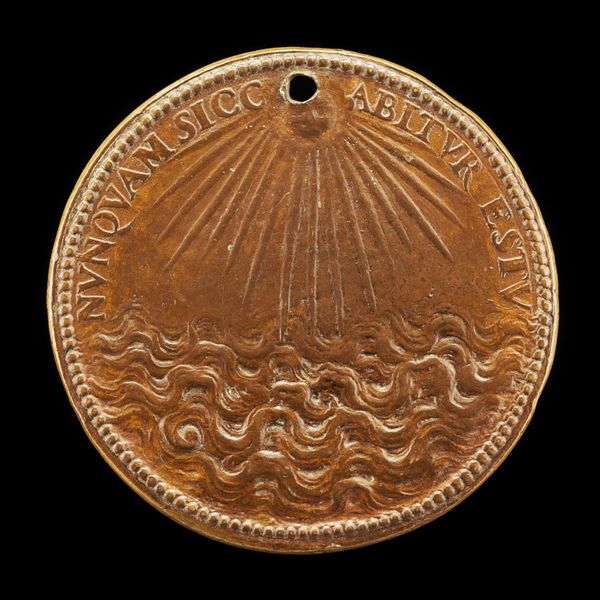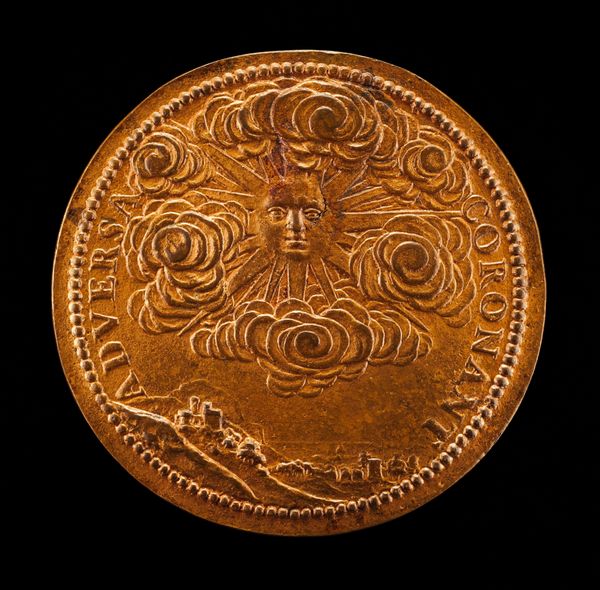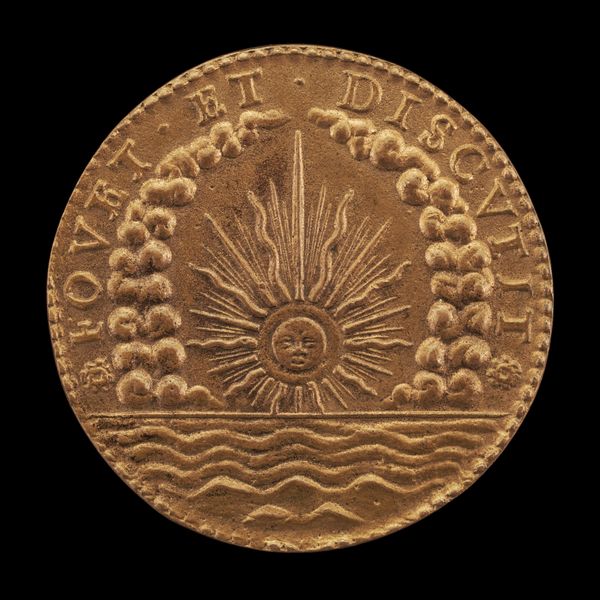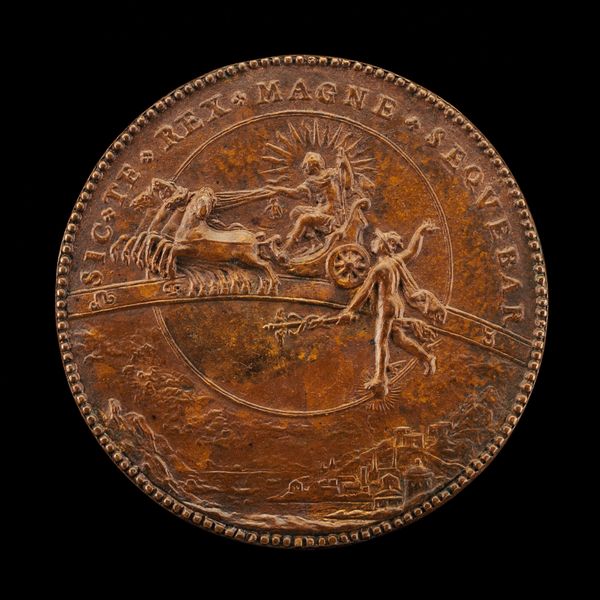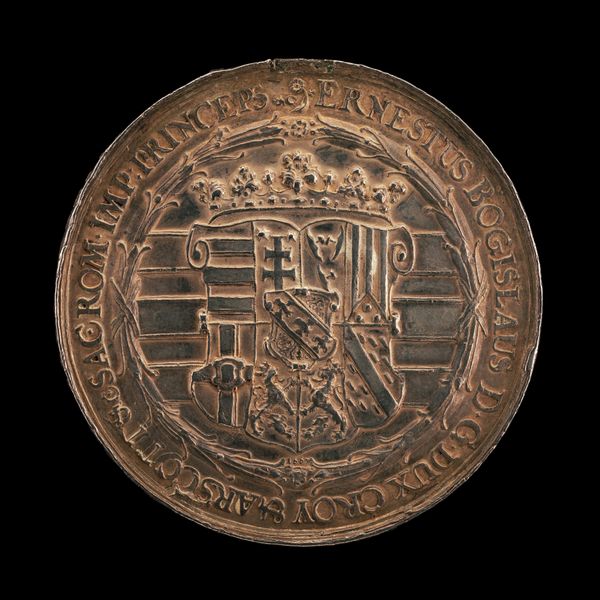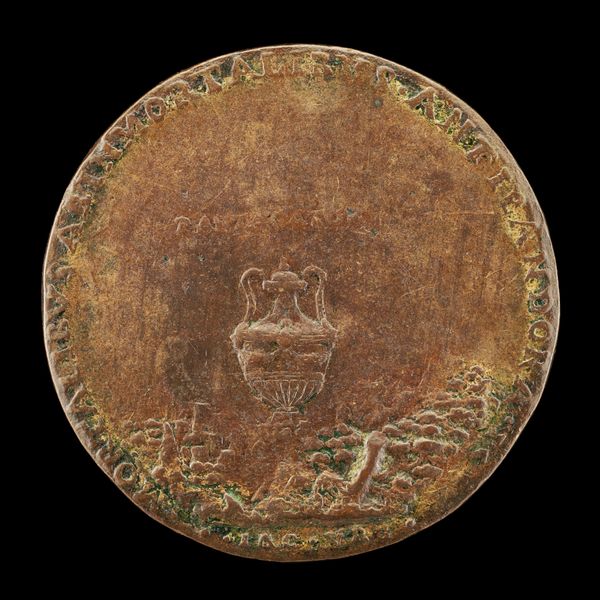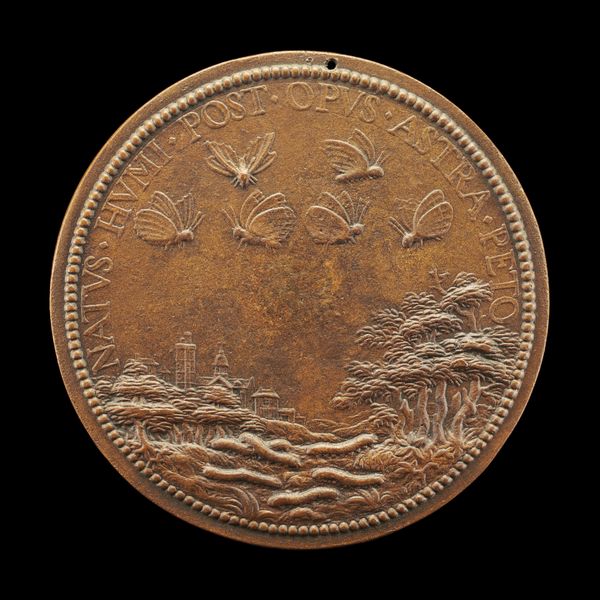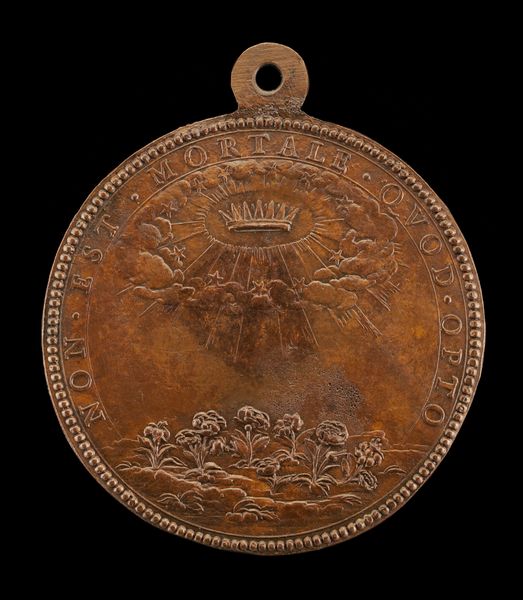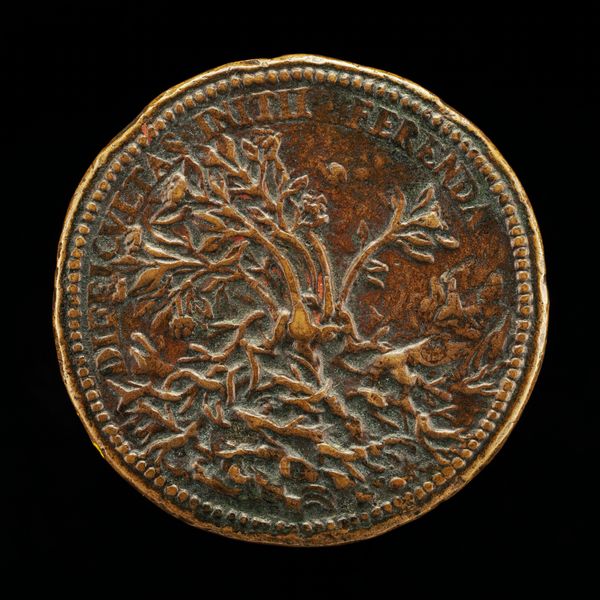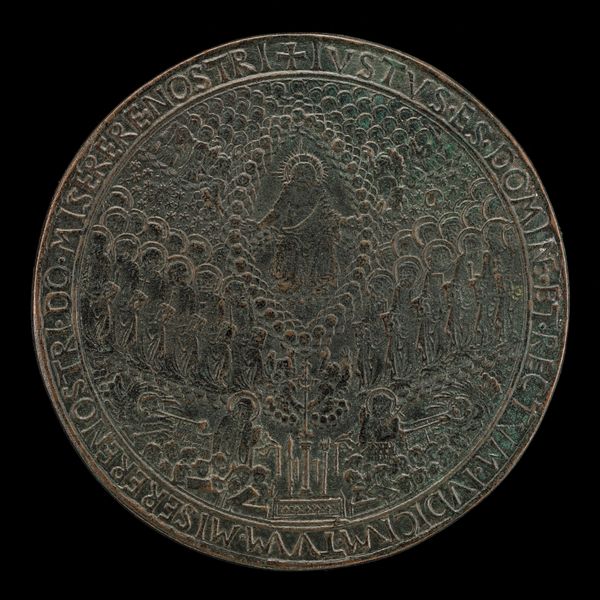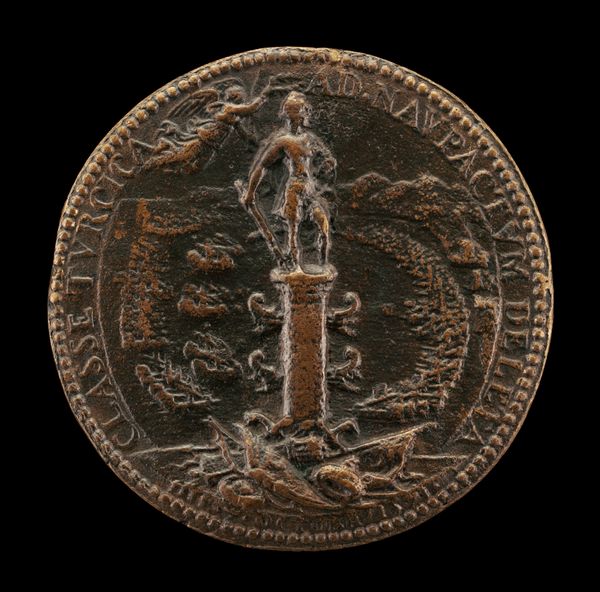![Sun Shining on a Stormy Sea [reverse] by Pier Paolo Galeotti](/_next/image?url=https%3A%2F%2Fd2w8kbdekdi1gv.cloudfront.net%2FeyJidWNrZXQiOiAiYXJ0ZXJhLWltYWdlcy1idWNrZXQiLCAia2V5IjogImFydHdvcmtzL2RkMmFiMWYwLTVjYzEtNGVhYy1hMGViLTc5ODk3MTlmMmNmYy9kZDJhYjFmMC01Y2MxLTRlYWMtYTBlYi03OTg5NzE5ZjJjZmNfZnVsbC5qcGciLCAiZWRpdHMiOiB7InJlc2l6ZSI6IHsid2lkdGgiOiAxOTIwLCAiaGVpZ2h0IjogMTkyMCwgImZpdCI6ICJpbnNpZGUifX19&w=3840&q=75)
metal, relief, sculpture
#
metal
#
relief
#
landscape
#
mosaic
#
figuration
#
sculpture
#
italian-renaissance
Dimensions: overall (diameter): 5.17 cm (2 1/16 in.) gross weight: 44.62 gr (0.098 lb.) axis: 12:00
Copyright: National Gallery of Art: CC0 1.0
Curator: Looking at Pier Paolo Galeotti's relief in metal, created around 1559, titled "Sun Shining on a Stormy Sea," my immediate reaction is one of striking contrast. The image feels both turbulent and divinely ordered. Editor: The contrast certainly jumps out. Visually, the turbulent sea rendered with dense, rhythmic curves takes up the lower half of the circular composition. Above it, rigid lines radiate from a small, human-like face, almost flattening the three-dimensional space. It's a captivating juxtaposition of forms. Curator: The piece makes me think about power, doesn't it? The Renaissance was hardly a stable period; it was riven with conflict, with social upheaval playing out across Europe, the reverberations of religious reformation and emerging proto-capitalist structures. Could this image of the sun literally "shining" down and perhaps suppressing the stormy sea, represent dominant forces quelling social unrest? Editor: That's a compelling reading. On a formal level, consider how the composition directs our gaze. The artist uses linear perspective with the sun's rays as orthogonal lines leading to the vanishing point, which happens to be that ambiguous face, commanding our attention. Even the lettering on the edge seems carefully considered within the overall design. Curator: Indeed. I’m also intrigued by the symbolism of the sea itself, which can stand for both chaos and opportunity depending on the viewer's position and pre-existing belief systems. Remember this image would have been intended for elite consumption and that the wealthy merchant class rose in prominence during the Italian Renaissance; they understood very well that commerce equals the crossing of bodies of water. Editor: It is thought-provoking, how the dynamic waves imply continuous movement while being rigidly constrained within the circular metal form. Even its function as a medal reverses the content, containing something vast and fluid into something static and collectible. Curator: Thinking about intersectional issues, though: who owned and had access to this work? What gender were they and how did that affect its reception? Did Galeotti, as a sculptor working with metal, reinforce the artistic structures dominated by males in that time? Editor: Those are crucial questions, prompting us to see this object not as a mere aesthetic artifact but as a locus of social and political power. Ultimately, Galeotti's mastery invites interpretations beyond the immediately visible. Curator: Precisely. I appreciate now the importance of considering all perspectives in the critical discourse, to create space for new understandings. Editor: Yes, balancing immediate aesthetic response with deeper visual and theoretical exploration is essential to arrive at complex and nuanced discussions of Renaissance art.
Comments
No comments
Be the first to comment and join the conversation on the ultimate creative platform.
